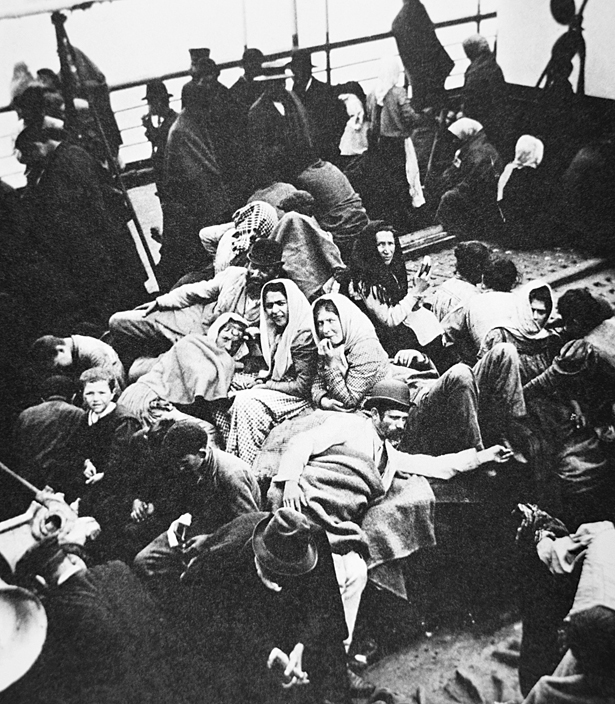A History of World Societies:
Printed Page 780
A History of World Societies Value
Edition: Printed Page 790
The Great Global Migration
What fueled migration, and what was the general pattern of this unprecedented movement of people?
A poignant human drama was interwoven with this worldwide economic expansion: millions of people left their ancestral lands in one of history’s greatest migrations, the so-
Between 1750 and 1900 Asia’s population followed the same general trend. The population of China, by far the world’s most populous country in the middle of the eighteenth century, increased from about 143 million in 1741 to a little more than 400 million in the 1840s, although total numbers grew more slowly in the turbulent late nineteenth century. Since African and Asian populations increased more slowly than those in Europe, Europeans and peoples of predominantly European origin jumped from about 22 percent of the world’s total in 1850 to a high of about 38 percent in 1930.
Rapid population growth led to relative overpopulation in area after area in Europe and was a driving force behind emigration and Western expansion. Millions of country folk moved to nearby cities, and the more adventuresome went abroad, in search of work and economic opportunity. Some governments encouraged their excess populations to emigrate, even paying part of their expenses. Wars, famine, poverty, and, particularly in the case of Russian and eastern European Jews, bigotry and discrimination were also leading causes for emigrants to leave their ancestral homelands. More than 60 million people left Europe over the course of the nineteenth century, primarily for the rapidly growing “areas of European settlement” — North and South America, Australia, New Zealand, and Siberia (see Chapter 27). European emigration crested in the first decade of the twentieth century, when more than five times as many men and women departed as in the 1850s.

The European migrant was most often a small peasant landowner or a village craftsman whose traditional way of life was threatened by too little land, estate agriculture, and cheap factory-
Ties of family and friendship played a crucial role in the movement of peoples. Over several years a given province or village might lose significant numbers of its inhabitants to migration. These then settled together in rural enclaves or tightly knit urban neighborhoods in foreign lands thousands of miles away. Very often a strong individual — a businessman, a religious leader — blazed the way, and others followed, forming a migration chain.
A spirit of revolt, adventure, and independence spurred many young European men and women to emigrate. In Sweden and Norway, in Jewish Russia and Italy, these young people felt frustrated by the small privileged classes that often controlled both church and government and resisted demands for change and greater opportunity. Migration slowed when the economic situation improved at home, particularly as countries industrialized and many more occupational opportunities became available. People also stayed put when they began to win basic political and social reforms, such as the right to vote and social security.
A substantial number of Asians — especially Chinese, Japanese, Indians, and Filipinos — also responded to population pressure and rural hardship with temporary or permanent migration. At least 3 million Asians moved abroad before 1920. Most went as indentured laborers to work under incredibly difficult conditions on the plantations or in the gold mines of Latin America, southern Asia, Africa, California, Hawaii, and Australia (see Chapter 26). White estate owners often used Asians to replace or supplement black Africans after the suppression of the Atlantic slave trade.
Asian migration would undoubtedly have been much greater if planters and mine owners desiring cheap labor had had their way. But usually they did not. Asians fled the plantations and gold mines as soon as possible, seeking greater opportunities in trade and towns. Here, however, they came into conflict with white settlers, who demanded a halt to Asian immigration. By the 1880s Americans and Australians were building great white walls — discriminatory laws designed to keep Asians out.
The general policy of “whites only” in the lands of large-
Within Asia and Africa the situation was different. Migrants from south China frequently settled in Dutch, British, and French colonies of Southeast Asia, where they established themselves as peddlers and small shopkeepers (see Chapter 26). These “overseas Chinese” gradually emerged as a new class of entrepreneurs and officeworkers. Traders from India and modern-